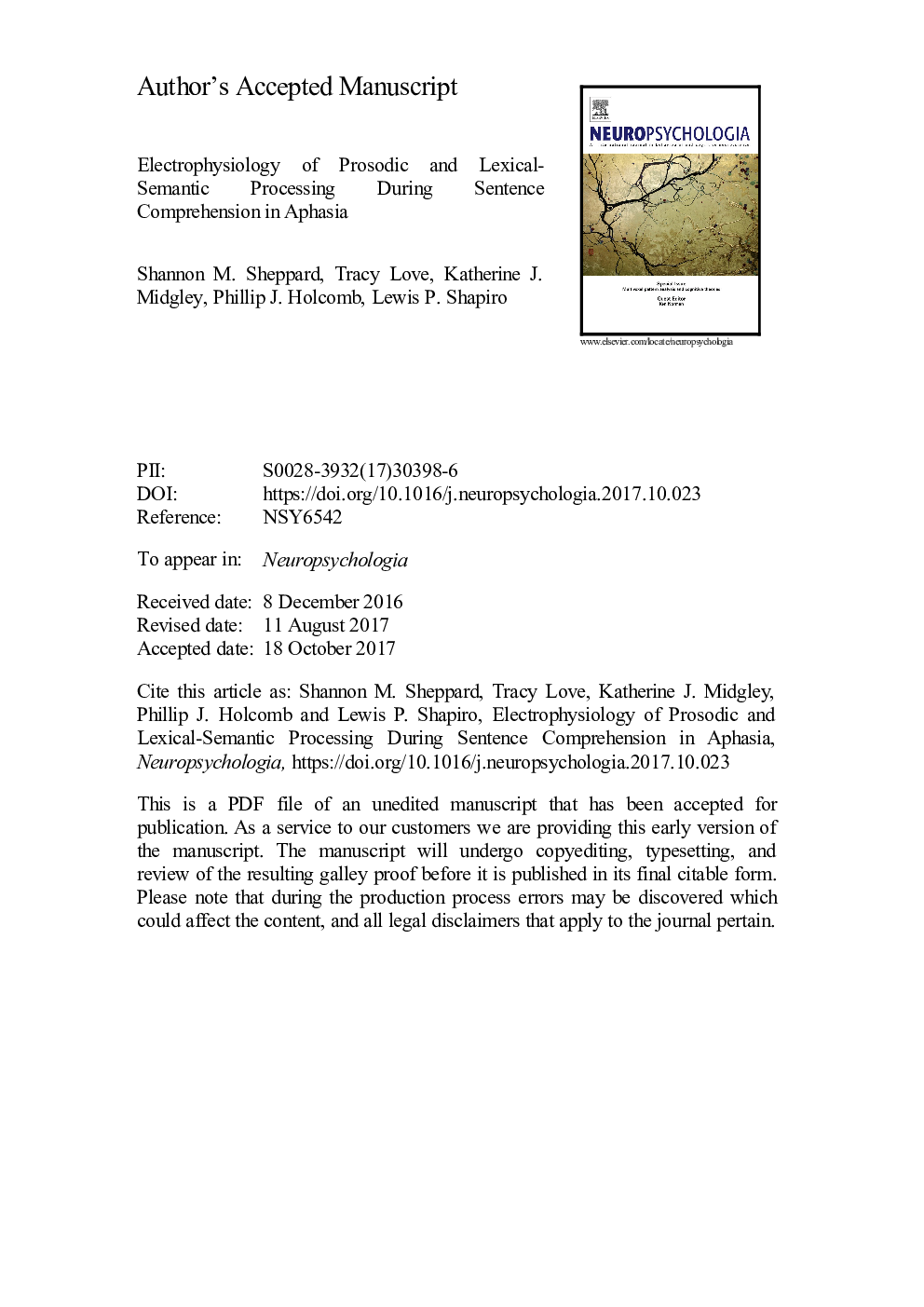| کد مقاله | کد نشریه | سال انتشار | مقاله انگلیسی | نسخه تمام متن |
|---|---|---|---|---|
| 7318198 | 1475548 | 2017 | 51 صفحه PDF | دانلود رایگان |
عنوان انگلیسی مقاله ISI
Electrophysiology of prosodic and lexical-semantic processing during sentence comprehension in aphasia
ترجمه فارسی عنوان
الکتروفیزیولوژی فرایندهای پردازشی و لفظی-معنایی در هنگام درک مطلب در حالت افسسی
دانلود مقاله + سفارش ترجمه
دانلود مقاله ISI انگلیسی
رایگان برای ایرانیان
کلمات کلیدی
موضوعات مرتبط
علوم زیستی و بیوفناوری
علم عصب شناسی
علوم اعصاب رفتاری
چکیده انگلیسی
Event-related potentials (ERPs) were used to examine how individuals with aphasia and a group of age-matched controls use prosody and themattic fit information in sentences containing temporary syntactic ambiguities. Two groups of individuals with aphasia were investigated; those demonstrating relatively good sentence comprehension whose primary language difficulty is anomia (Individuals with Anomic Aphasia (IWAA)), and those who demonstrate impaired sentence comprehension whose primary diagnosis is Broca's aphasia (Individuals with Broca's Aphasia (IWBA)). The stimuli had early closure syntactic structure and contained a temporary early closure (correct)/late closure (incorrect) syntactic ambiguity. The prosody was manipulated to either be congruent or incongruent, and the temporarily ambiguous NP was also manipulated to either be a plausible or an implausible continuation for the subordinate verb (e.g., "While the band played the song/the beer pleased all the customers."). It was hypothesized that an implausible NP in sentences with incongruent prosody may provide the parser with a plausibility cue that could be used to predict syntactic structure. The results revealed that incongruent prosody paired with a plausibility cue resulted in an N400-P600 complex at the implausible NP (the beer) in both the controls and the IWAAs, yet incongruent prosody without a plausibility cue resulted in an N400-P600 at the critical verb (pleased) only in healthy controls. IWBAs did not show evidence of N400 or P600 effects at the ambiguous NP or critical verb, although they did show evidence of a delayed N400 effect at the sentence-final word in sentences with incongruent prosody. These results suggest that IWAAs have difficulty integrating prosodic cues with underlying syntactic structure when lexical-semantic information is not available to aid their parse. IWBAs have difficulty integrating both prosodic and lexical-semantic cues with syntactic structure, likely due to a processing delay.
ناشر
Database: Elsevier - ScienceDirect (ساینس دایرکت)
Journal: Neuropsychologia - Volume 107, December 2017, Pages 9-24
Journal: Neuropsychologia - Volume 107, December 2017, Pages 9-24
نویسندگان
Shannon M. Sheppard, Tracy Love, Katherine J. Midgley, Phillip J. Holcomb, Lewis P. Shapiro,
